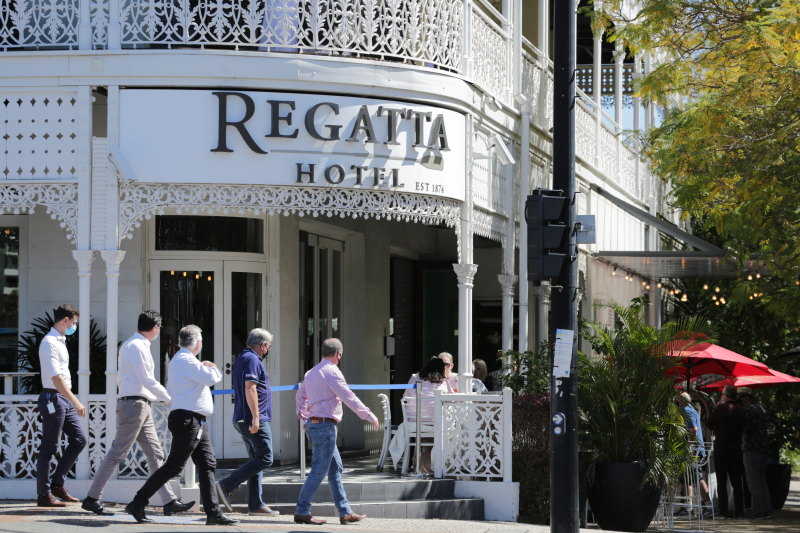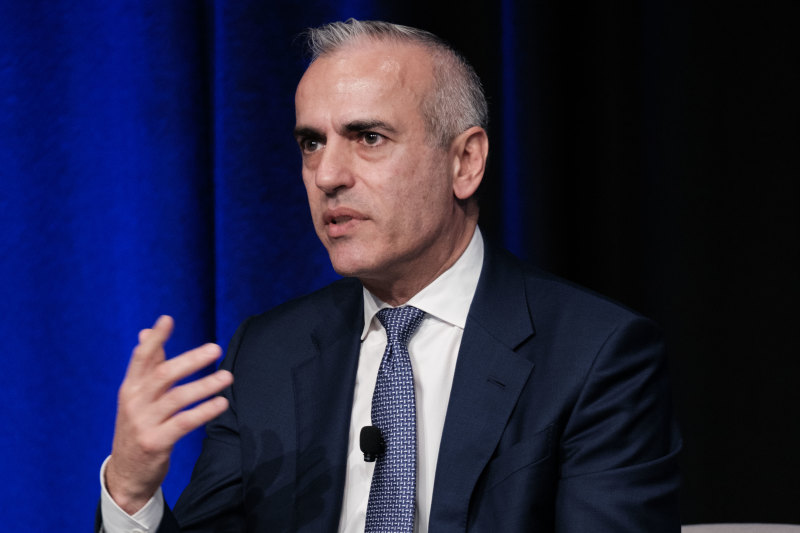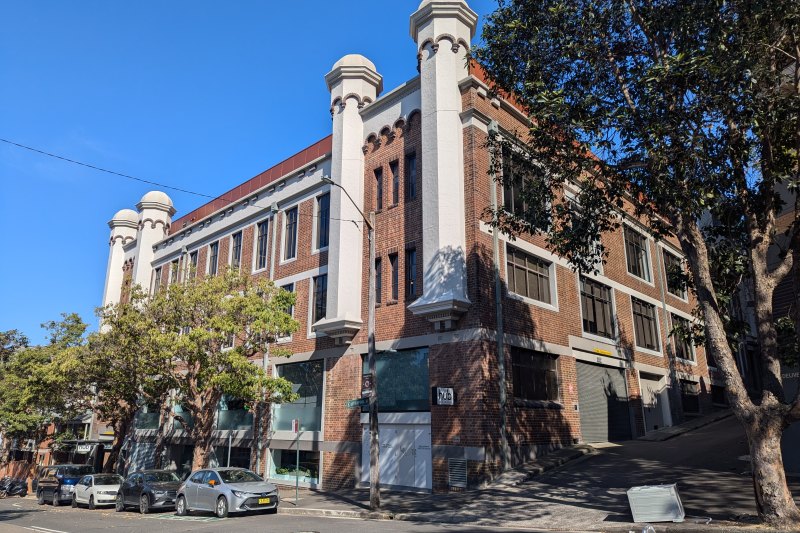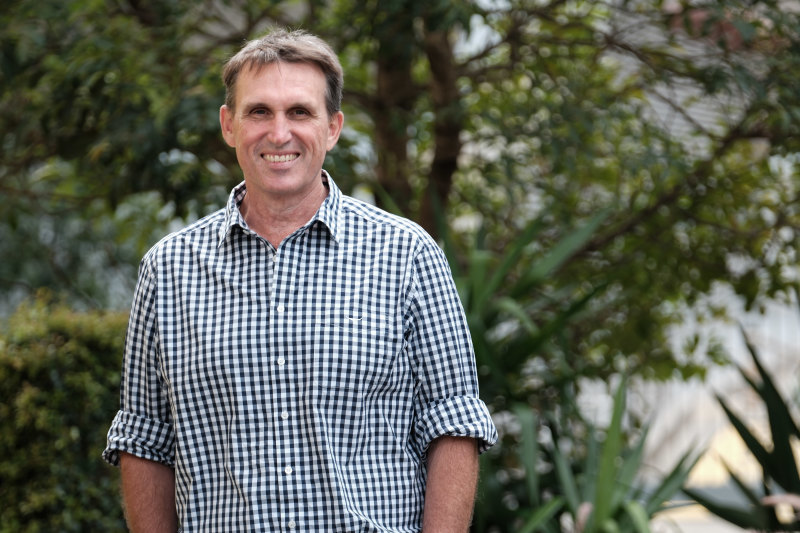
Poly Australia commissioning major piece of public art for its first Australian commercial building
Australia is fast catching up to the US, Britain and the rest of Europe in its embrace of public art around commercial real estate as a way of inspiring the users of buildings and passers-by, and making our cities more liveable, experts say.
“Twenty years ago in Australia, it was seen as a thorn in the side of cities and developers as it became part of the requirements for many new projects,” said art curator Owen Craven, principal of global public art studio UAP.
“We had no tradition of public art as we never had the same kind of long history and, for a country largely made up of convicts, it wasn’t a priority. But now it’s much more appreciated as a way of telling a narrative and enhancing the public domain, and as something that people can connect to and engage with.
“Art can become the soul of a place, and public art starts to translate and convert space into place.”
One of Australia’s newest public artworks is set to be a piece now being commissioned by developer Poly Australia for the 15-metre-high glass space in the foyer of its Poly Centre, a 26-storey commercial building at 210 George Street, in Sydney, that’s soon to start construction.
This comes as one of the City of Sydney’s most high-profile councillors, Christine Forster, has called on developers to contribute more to the funding of public art in Sydney.
“It’s my view that rather than hitting the taxpayers in the pocket, we should be looking to the people that are investing in the built form of the city: the developers,” she told a forum on public art last week.
“We should be requiring them to invest in public art.”
Poly Australia’s first commercial project in the country was designed by Grimshaw Architects as the new gateway to Circular Quay – and as a result needed a momentous piece of public art, said Poly NSW executive director Simon Blount.
Three leading artists, Emmanuelle Moureaux from France, Pae White from the US and Australian Janet Laurence have been selected from a large field of suitable artists to submit concepts for consideration.
“The quadruple-height void will be very visible from George Street in its position by the corner of George and Dalley streets and, at street level, is an interface between public domain and private that tens of thousands of people walk past every day,” said Mr Blount.
“I would love a substantial 3D piece of art either hanging off the ceiling or coming off the floor that, when seen from a distance, you think, ‘Wow! How beautiful!’ But then it draws you in so you can appreciate its detail. I want it to be timeless, to create intrigue and to be something that people look at both day and night, with perhaps lighting used as well at night …”
It is hoped that the winning public artwork will create a great awareness of the building – due for completion in 2021 – make it distinctive and enjoyable for the commercial tenants, will appeal to visitors and the general public outside, will promote the artist who designs it, and will add to Sydney’s allure.
And if that sounds a tall order, Mr Blount is not perturbed by the challenge, nor the controversies over other pieces of public art, such as the proposed Cloud Arch sculpture in the Sydney CBD that’s now on hold for consideration until the tram line is finished.
“I’m not opposed to controversy, but I’ve walked into a number of commercial buildings that have been completed over the past two years and seen their public art, and thought, ‘No!’,” he said. “It’s always subjective but controversy can be good for the right reasons, and adding to the conversation.”
The brief was produced by a collaboration of the developer, the architects, the City of Sydney which can make the provision of public art one of the requirements of the development application and the approval process, and the curator. Mr Blount declined to reveal how much the whole procedure for commissioning the artwork is costing, but said it’s “in excess of” tens of thousands of dollars.
The three artists are currently working on their concepts, ready to present to the judging panel. The Australian contender, Janet Laurence, says it’s exciting that companies, governments and councils are now commissioning public art, helping close the gap with other countries.
“We are catching up in realising that our cities are important places, and important living spaces, where people want to live and work and engage with ideas,” said Ms Laurence, who has exhibited around the world, has sat before on the City of Sydney public art committee and currently has a show on at the Museum of Contemporary Art, After Nature.
“Good public art needs to engage curiosity and offer different meanings to different people. It should also become part of the fabric of a city, where possible, rather than just being a decorative thing. It needs to demand its own attention and become part of a dialogue about what’s going on.”
Ms Laurence’s public art around Sydney includes Edge of the Trees on the forecourt of the Museum of Sydney, done with Fiona Foley, and Veil of Trees with Jisuk Han, a series of inscribed glass and steel panels along Mrs Macquarie’s Walk around the Domain.
Another she particularly likes is Tied to Tide at Pyrmont, the series of red ladders and hardwood beams connected to a float to reflect the tides, by artists Jennifer Turpin and Michaelie Crawford.
Mr Craven’s favourite piece of public art in Sydney is Judy Watson’s Tank Stream in the lobby of 200 George Street, in Melbourne Remember Me, Reko Rennie’s memorial to the stolen generation at Atherton Gardens in Fitzroy, and in Brisbane Ned Kahn’s 5000-square-metre, eight-storey kinetic artwork on the side of the domestic airport’s car park that appears to ripple with the wind.









